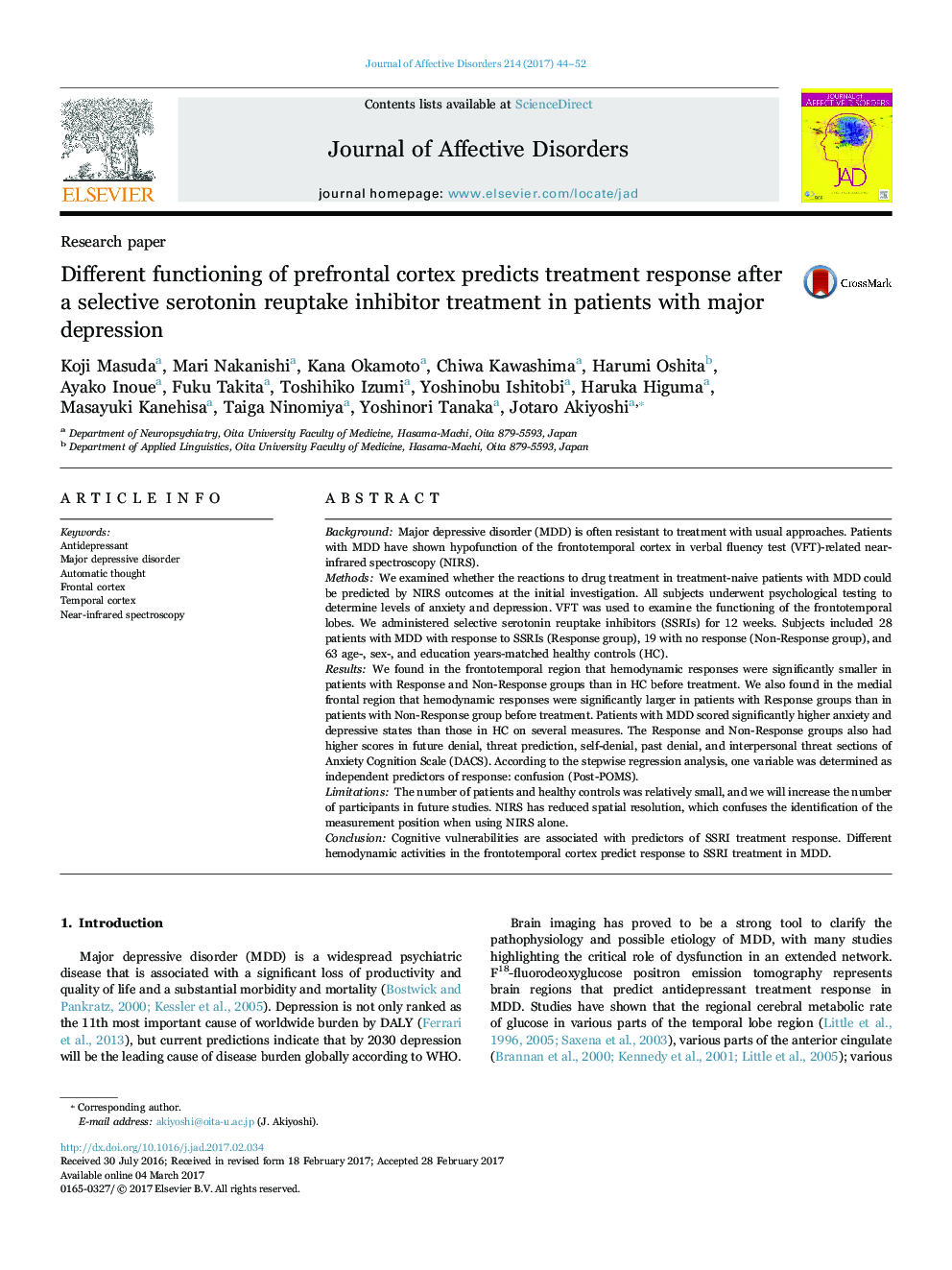| کد مقاله | کد نشریه | سال انتشار | مقاله انگلیسی | نسخه تمام متن |
|---|---|---|---|---|
| 5722032 | 1608111 | 2017 | 9 صفحه PDF | دانلود رایگان |
- Major depressive disorder (MDD) is often resistant to treatment with usual approaches.
- We examined whether the reactions to drug treatment in MDD could be predicted by NIRS.
- Cognitive vulnerabilities are associated with predictors of SSRI treatment response.
- Hemodynamic responses were smaller in patients with Response and Non-Response groups.
- Hemodynamic responses were larger in Response groups than Non-Response group.
BackgroundMajor depressive disorder (MDD) is often resistant to treatment with usual approaches. Patients with MDD have shown hypofunction of the frontotemporal cortex in verbal fluency test (VFT)-related near-infrared spectroscopy (NIRS).MethodsWe examined whether the reactions to drug treatment in treatment-naive patients with MDD could be predicted by NIRS outcomes at the initial investigation. All subjects underwent psychological testing to determine levels of anxiety and depression. VFT was used to examine the functioning of the frontotemporal lobes. We administered selective serotonin reuptake inhibitors (SSRIs) for 12 weeks. Subjects included 28 patients with MDD with response to SSRIs (Response group), 19 with no response (Non-Response group), and 63 age-, sex-, and education years-matched healthy controls (HC).ResultsWe found in the frontotemporal region that hemodynamic responses were significantly smaller in patients with Response and Non-Response groups than in HC before treatment. We also found in the medial frontal region that hemodynamic responses were significantly larger in patients with Response groups than in patients with Non-Response group before treatment. Patients with MDD scored significantly higher anxiety and depressive states than those in HC on several measures. The Response and Non-Response groups also had higher scores in future denial, threat prediction, self-denial, past denial, and interpersonal threat sections of Anxiety Cognition Scale (DACS). According to the stepwise regression analysis, one variable was determined as independent predictors of response: confusion (Post-POMS).LimitationsThe number of patients and healthy controls was relatively small, and we will increase the number of participants in future studies. NIRS has reduced spatial resolution, which confuses the identification of the measurement position when using NIRS alone.ConclusionCognitive vulnerabilities are associated with predictors of SSRI treatment response. Different hemodynamic activities in the frontotemporal cortex predict response to SSRI treatment in MDD.
Journal: Journal of Affective Disorders - Volume 214, May 2017, Pages 44-52
